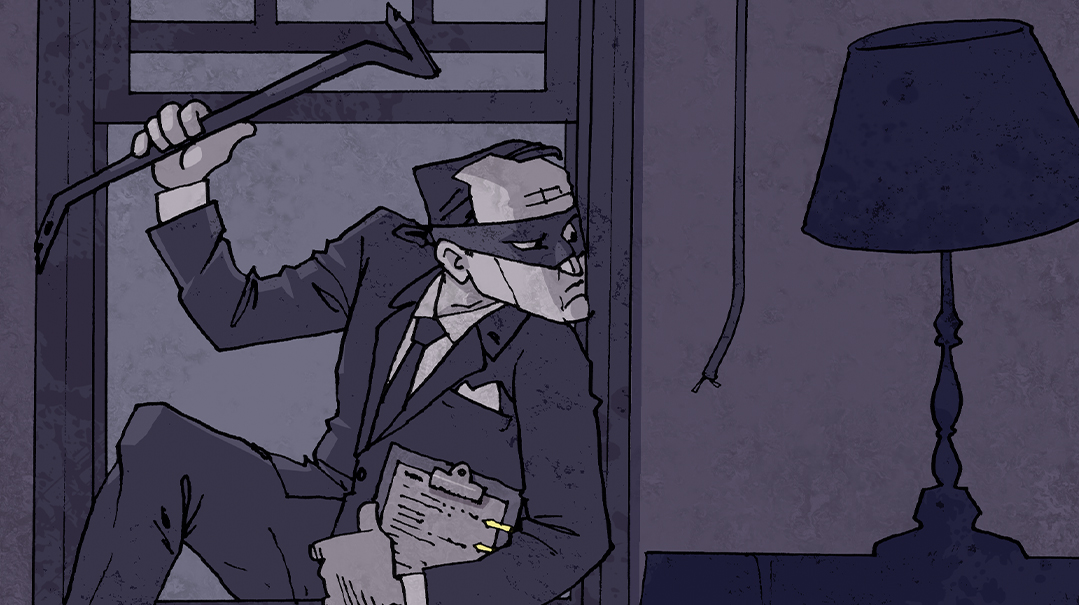Luck of the Draw

At three auctions we visited, the products might be different, yet the fever’s all the same

Illustrations: Dov Ber Cohen
Episode #1: House Hunters
The place: Hamilton County Court of Common Pleas, Downtown Cincinnati
The item: a three-bedroom, two-floor house
The stakes: an affordable starter house for a family of four
The metal detector buzzes loudly as we stand in line with dozens of others to enter the courthouse in downtown Cincinnati. This tall stately building is seeing a lot of action today. Some of those in line are there to support relatives facing trial, others are there to fulfill their civic obligation of jury duty, while Moshe and I are here for the weekly property foreclosure auction: We’re ready to roll the dice and see if Moshe can buy his first home at a steep discount.
This is actually more exciting than most sheriff auctions I’ve attended periodically over the years, mainly as an attorney on behalf of foreclosing banks. Although foreclosures are not my specialty, out-of-town foreclosure law firms often hire a local counsel to show up and bid on their behalf. It’s more than a little unpleasant if the family being foreclosed upon shows up and you’re the winning bid on behalf of the bank. In such situations, I’ve tried hiding, pretending to be late and needing to rush out, or sticking around for the rest of the auctions just to avoid getting cornered. As much as I explain that I’m just representing the out-of-town firm and know little about the case, I become the enemy that day, the one who’s taking their house away, helping the bank that will soon evict them and sell their home to a stranger.
But if Moshe can have a chance at a house today, I’m happy to help.
Foreclosed houses wind up at sheriff auctions after a lengthy process, starting when the homeowner stops paying the mortgage. Once the bank files the foreclosure lawsuit, the homeowner can still defend himself by poking holes in the bank’s mortgage or pleadings, showing the judge extenuating circumstances, or working out a loan modification for new payment terms. If that doesn’t work, the property is typically set for a sheriff sale.
o set the opening price, the sheriff’s department does a drive-by appraisal on the home, which typically appraises much lower than market value. The starting bid is set at two thirds of that price. While the prospective bidder cannot legally enter the property (which is still owned by the defaulting borrower), he can talk to neighbors and sniff around to get a sense of the house and the neighborhood before bidding. If the house is vacant, prospective bidders sometimes break in to take a quick look. As the property may have major damage, it’s mostly an investor crowd at these auctions looking for houses they can fix and flip.
While buyers can sometimes get a great deal, usually the lending bank has the winning bid. Banks may bid up to the amount they are owed without having to pay anything out of pocket: If the property was appraised at $300,000 and bidding starts at $200,000 while the bank is owed $275,000 including unpaid mortgage and interest, the bank can bid up to $275,000 without paying out of pocket. If the bank wins, they usually put the property on the market or package it with other properties to sell to investors.
When a property goes up for sale in the frum area, there’s the excitement of getting a home at a steep discount, which is why we’re here today. Moshe, who recently moved to Cincinnati, is renting a small apartment and looking for a house, but he is on a tight budget. While houses he’s looking at are generally in the $250,000 range, the house we’re here for today has an opening bid of under $100,000. Although it’s smaller and likely more outdated, the low price means he’ll be able to put in the work it needs. I’ve prepped Moshe and he has the $5,000 certified check he’ll need if he wins, with the rest to be paid within 30 days to the sheriff.
Oops! We could not locate your form.







